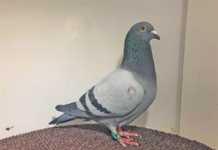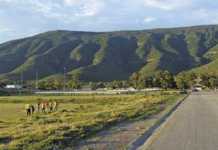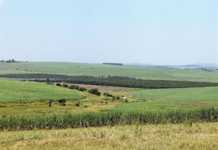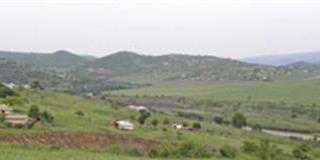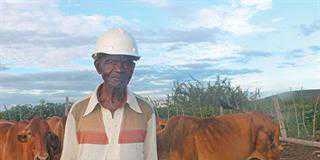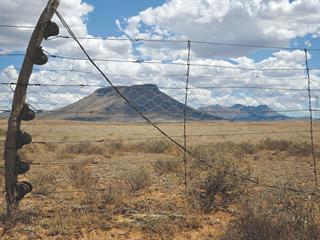
There is a modest white gravestone in the old cemetery of the Eastern Cape town of Middelburg. This is the resting place of John Sweet Distin Esquire, formerly of Tafelberg Hall, a farm with its own distinctive “table mountain” on the outskirts of Middelburg.
Few speak of Distin anymore, but his name is significant to farming in South Africa – he is widely credited with erecting the first stock fences in our country, pioneering a revolution in livestock management.
It’s hard to believe there was a time when no one even knew how to erect the stock fences that are now intrinsic to our national landscape.
Distin’s tale of fortune and fences began with a splash when he arrived in South Africa in 1846. He and his parents were returning to England from New Zealand when their ship docked at Algoa Bay.
As they departed, the 20-year-old made up his mind to try his luck in South Africa and jumped overboard.
Distin joined the British Army for a while, made a bit of cash fighting in the Frontier Wars, and subsequently established his trading business in the Eastern Cape, which financed his love of farming and the purchase of his farm Tafelberg Hall in the mid-1800s.
Pioneering livestock management
So firmly did he advocate the need to divide livestock farms into fenced off stock camps for veld rejuvenation and animal health that, in the 1860s, he put it before parliament. Defeated there, Distin headed back to his farm and set about fencing his own farm. With no local skills available, Distin had to bring in a man from Australia to do it.
At the time, no one wanted to concede that the vast funds required for fencing were a necessity, until overgrazing and disease forced the government’s hand many years later, resulting in the act regulating the erection and maintenance of dividing fences in 1883.
Distin’s first fence, now a national monument, is still standing taught and strong, tethered to the original sneezewood fencing poles at the foot of the table-shaped mountain.
Progressive farmer
You can’t miss Tafelberg should you find yourself travelling on the road between Middelberg and Cradock. This was the setting for the tale of a remarkable man of energy and enterprise, alternately described as “a most progressive farmer” and “rather eccentric with vivid blue eyes, a red face and a temper to match”.
“He was not the first or the last owner of Tafelberg Hall, which dates back well over two centuries, but he was certainly the most interesting,” the current owner of Tafelberg Hall, William Asher explains as he leads the way down the cavernous passage of the old Herbert Baker mansion where he and his 25-year-old son, Gareth live. Tafelberg Hall has been in their family since 1947 when William’s father, Allan Asher, bought the farm two years before William was born.
The passage leads to a vast room with a polished sprung floor that once was a ballroom. At the far end is a dining table. It’s a bachelors’ den now, not that a lady or two doesn’t visit on occasion.
To the contrary, the Ashers have hosted a ball here for the local church, harking back to many years before when Distin’s wife, Selina, renowned for her love of all things beautiful, had transformed her Karoo home into an oasis of sociability and grace. “There were many balls then,” William says.
On the dining table he has laid out the history of Tafelberg Hall, told through cuttings from the Middelberg Echo, once a thriving newspaper with an editorial office in town, and through books that tell the stories of the great Karoo farms.
All speak of the grandeur of Tafelberg Hall, with its mill, granary, shearing house, carriage house, blacksmith’s shop and extensive labourers’ cottages. Extending for 20 000ha, it was a showpiece of modern farming methods at the time, headed by a man who believed in buying in the best breeding stock, from his extensive ostrich flock to his sheep.
Distin also cleverly created a system of dams dug sufficiently deep to prevent rapid evaporation, which maximised the flow of water throughout the farmstead.
Accounts from the day describe how it was hard to believe Tafelberg Hall was in the heart of the Karoo, as it resembled a villa in Cape Town’s leafy Rondebosch. It had terraced gardens with roses, vineyards and hundreds of fruit and nuts trees – quinces, pomegranates, loquats and almonds. Today the grand gardens are no more – the labour and upkeep would be far too intensive.
Distin’s dreams finally came to an end at Tafelberg Hall when he lost his fortune through a combination of the ostrich feather slump and his wild, spendthrift progeny. He had 11 children, including seven sons, some of whom were far more interested in parties than farming.
On one occasion they were sent to Cape Town to sell livestock, but instead of bringing the considerable cheque home, they booked out the Mount Nelson Hotel, hired a band and spent the money on a party to top all parties.
Distin ultimately went bankrupt and in 1898 he was forced to sell Tafelberg Hall, handing over the keys to his kingdom.
Tafelberg Hall after Distin
The next owner was a man from Johannesburg named Robert Struben who had made his fortune as one of the first men to discover gold on the Reef. Struben demolished the old homestead and had Herbert Baker design the house that stands today, as a fitting dwelling for his high-society wife. They didn’t last long in the Karoo as she considered herself to be several cuts above the local community, creating a self-inflicted isolation she couldn’t bear.
A century later, Tafelberg Hall resonates with all the characters who have inhabited its halls. The Ashers keep the homestead intact, but are constrained by the exorbitant costs of historic restoration. They recently replaced the corrugated iron roof and constantly debate which of the giant trees surrounding the house need to be felled to protect the foundations.
Gareth, a graduate of Grootfontein Agricultural College, sees his future here. “I enjoy farming and the simplicity of the lifestyle,” he explains. “The city is no place for me. One building looks exactly like the next and what do you do after work each day? Here you can take a walk in the veld.”
He has no desire to emigrate. “I was born here, so why would I want to leave? Wherever you go, it’s hard work and I would rather work hard here where I fit in. People who don’t like it here must pack up and go. The rest of us will get on with life at home.”
William adds, “Life changes wherever you are, sometimes fast, sometimes in more subtle ways. That modest white gravestone in the old cemetery in Middelberg says it all.”

